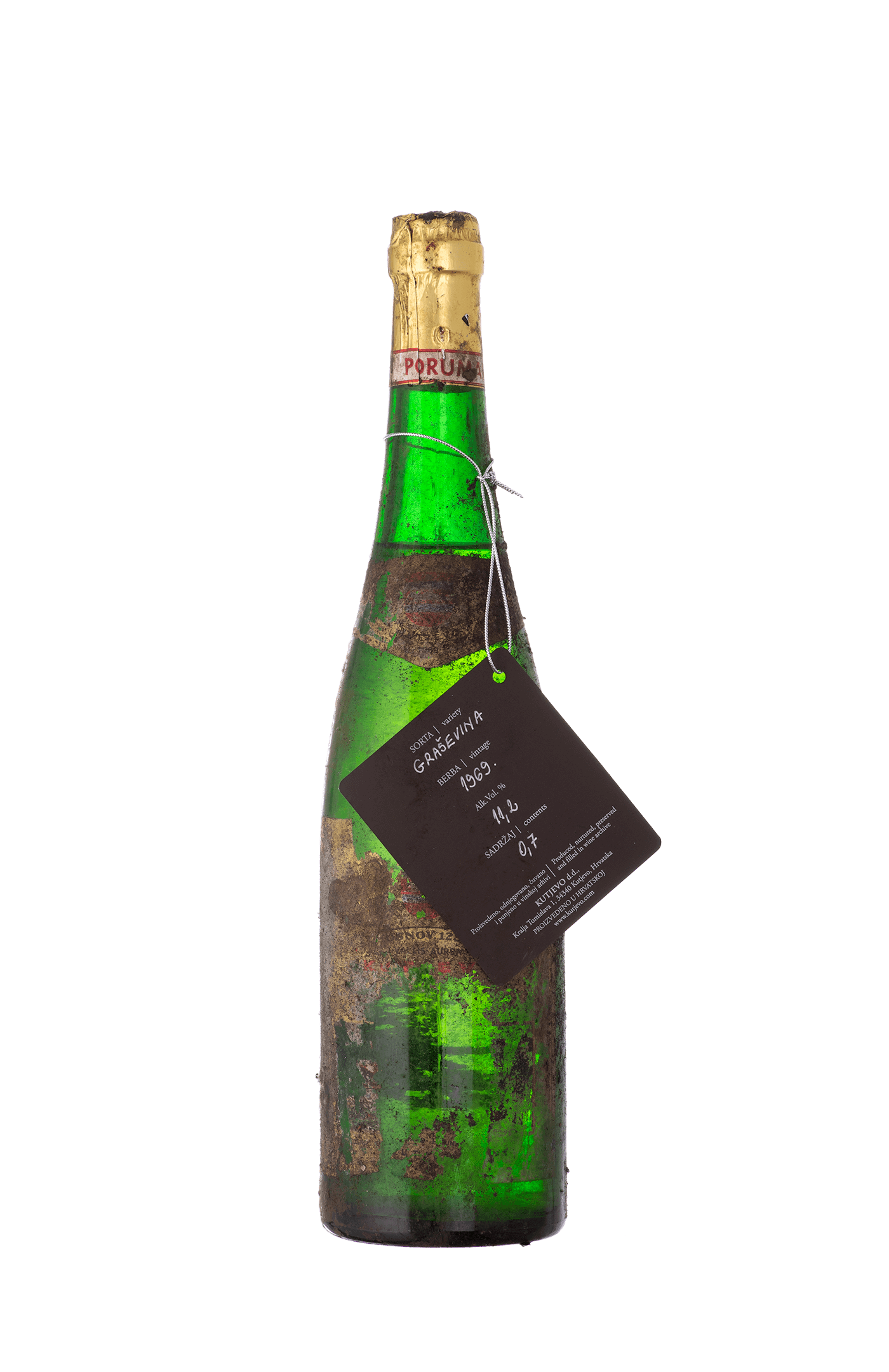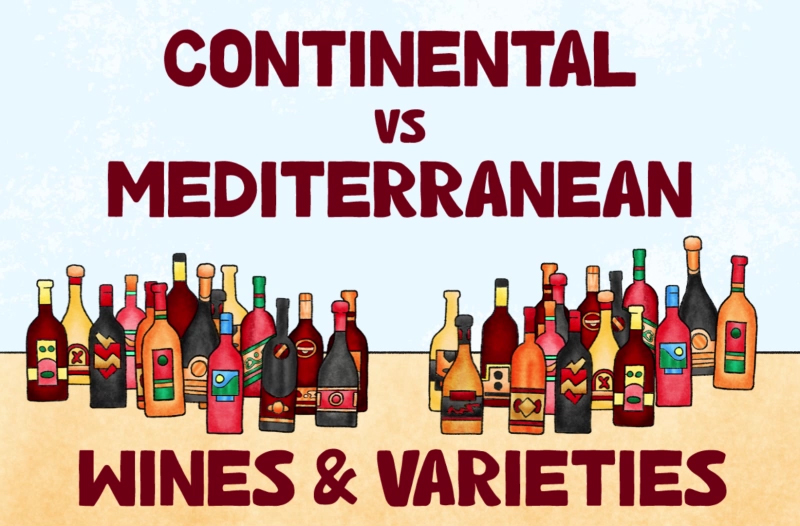7 Fun Facts About Graševina

Wine enthusiasts and curious oenophiles often find themselves captivated by the diversity and richness of grape varieties worldwide. One of the treasures in this collection is one of the most beloved Croatian white grape varieties – Graševina. This grape variety has a rich history and a distinctive taste. Originating in Croatia, this grape has grown to become one of the country’s most beloved and intriguing varietals. This article will uncover seven fun and fascinating facts about Graševina that will leave you with a newfound appreciation for this extraordinary grape.
1. A historic heritage
Where the first vine of the variety we now call Graševina emerged remains a mystery. Still, everyone agrees that it thrives best in Slavonia and the Danube region, where it is destined to reign as the “Queen of vineyards.”
Although the true origins of Graševina remain uncertain, it is an international variety primarily associated with the Danube countries.
Graševina is cultivated in almost all Danube countries, including
- Romania,
- Serbia,
- Croatia,
- Hungary,
- the Czech Republic, and
- Austria,
and even two that are not traditional countries that are a part of the Danube region, such as
- Italy and
- Slovenia.
In terms of Croatia, Graševina is well-known in our region long before the mid-19th century, as it was already cultivated and highly esteemed in many areas.
Based on its name and numerous synonyms, we cannot accurately determine its origin. All previous assumptions have been proven incorrect.
But a new assumption, proposed in the now-famous book “Grape Varieties” (Robinson J. et al., 2012), suggests:
“Croatia, or more specifically, the Danube region, is the most likely place of origin for this variety.”
Due to this revelation, the same book, for the first time, uses Graševina as the primary identifier for this variety, thoroughly describing its characteristics.
This recognition is a testament to the grape’s excellence and the remarkable results it has achieved in Croatia.
The captivating history of Graševina continues to intrigue researchers and wine enthusiasts alike as they seek to uncover its true roots and celebrate its exceptional qualities.
Graševina’s journey from its mysterious beginnings to its present-day acclaim stands as a testament to this beloved grape variety’s enduring allure and significance in the Danubian winemaking tradition.
2. An international chameleon
Beyond Croatia’s borders, Graševina goes by different names. This name diversity is a testament to the grape’s adaptability and ability to thrive in different microclimates and produce diverse styles of wines depending on the terroir and winemaking techniques used.
One of the many synonyms are:
- Grašica in Serbia,
- Laški rizling in Slovenia,
- Riesling italico in Italy,
- Riesling italiano in Romania,
- Olaszrizling in Hungary,
- Wälsch or Welschriesling in Austria,
- Ryzlink Vlašsky in Czech Republic,
- Rizling Vlašsky in Slovakia.
3. Heart of Croatian wine culture

Croatia takes immense pride in its winemaking tradition, and Graševina sits at the heart of its wine culture.
It is Croatia’s most widely planted grape variety, where every fifth vine and every fourth bottle of wine produced in the country is made from the Graševina variety.
Resilient and consistently fruitful, Graševina is a versatile gem, ranging from well-balanced fresh and crisp wines to complex and exquisite sparkling or dessert wines.
For over two centuries, Graševina has thrived in the northern Croatian wine regions, particularly Slavonia and the Croatian Danube region.
This grape has selflessly demonstrated its exceptional characteristics and gifts over the years, finding the perfect conditions to unleash its true potential in the vineyards of Slavonia and the Danube wine region.
The acclaim for Graševina extends far beyond Croatia’s borders, as wine experts, oenologists, and wine connoisseurs attest to its undeniable allure.
When presented with wines made from this remarkable grape, they often find it hard to believe that it’s the same variety they know under a different name in their home or nearby countries.
The stark contrast in its expression of character, especially in the wines from Slavonia and the Croatian Danube, leaves them in awe.
In the south and southwest slopes of the mountains and hills in Slavonian vineyards, at elevations between 200 to 300 meters above sea level, Graševina thrives, producing top-quality grapes. Here, it showcases the full richness of its potential.
For instance, the Graševina from the renowned Kutjevo wine-growing region, Pošip from Korčula, and the noble Traminer (Gewürztraminer) from Ilok rank among first Croatia’s protected top-quality white wines.
Unlike the vineyards of central and eastern Europe, where Graševina is also cultivated, Slavonian vineyards’ of southern and southwestern positions allow it to stay on the vine until late autumn, and often deep into winter.
This extended ripening period creates a wealth of opportunities for exceptional wines, including ice and late-harvest wines, which have claimed numerous medals in domestic and international competitions.
Graševina’s resilience and ability to flourish in the diverse terroirs of Croatia make it a true national treasure.
Its consistent performance and capacity to surprise wine enthusiasts and experts alike have cemented its place as a crown jewel in Croatian winemaking.
As the story of Graševina continues to unfold with each new harvest, its allure and significance to the world of wine remain undiminished, and its future shines bright as a symbol of Croatian viticultural excellence.
4. Wine tourism and festivals
Croatia’s wine tourism has gained momentum in recent years, and Graševina plays a pivotal role in this rising trend.
Many wineries in Croatia open their doors to visitors, offering guided tours, vertical tastings and other wine related activities where visitors can experience the magic of Graševina firsthand.
Additionally, several wine festivals across Croatia celebrate this beloved grape, creating a vibrant and joyous atmosphere for wine enthusiasts to revel in.
5. Aromatic allure
Contrary to misconceptions, Graševina is a grape variety capable of producing exceptional wines, especially in certain regions.
In Croatia, three regions stand out for their prowess in cultivating this grape: Baranja and Ilok, nestled along the banks of the Danube, and Kutjevo in the heart of Slavonia.
The unique combination of factors in these areas contributes to the distinct characteristics of their Graševina wines.
Baranja and Ilok, with their thick layers of poor clay soil along the Danube, experience scorching summer heat, which naturally leads to reduced yields and concentrated flavors in the small berries.
Consequently, Baranja’s Graševina wines are renowned for their abundance of sweetness, alcohol content, and body.
Moving a bit downstream to Ilok, sheltered by the Fruška Gora mountain range, the wines boast fresher aromas and slightly higher acidity, making them more aromatic and lighter on the palate.
However, it’s in the region of Kutjevo where Graševina truly shines in terms of aromatic richness. The slopes of its hills don’t provide the same structural intensity as those in Baranja.
Still, they give rise to wines with a vibrant and lively character, characterized by an excellent balance of acidity, reminiscent of juicy apples.
In regular vintages, the aromas range from fresh fruity notes like apples and citrus to subtle herbal nuances.
During warmer years, exotic fruit aromas dominate the bouquet, and in later harvests, as sugar levels increase, abundant floral and honey notes come to the fore.
A distinguishing feature of all Graševina wines is their unique and lingering spicy-bitter aftertaste, which sets them apart from other grape varieties.
This intriguing characteristic further adds to the allure of Graševina and makes it an exciting choice for wine enthusiasts seeking something distinctive and memorable.
6. A versatile and food-friendly wine

Depending on the vineyard’s location, vineyard management practices, harvest timing, and winemaking approach, this versatile grape can be transformed into a delightful assortment of wine styles.
From dry and off-dry to sweet and late-harvest wines, this grape can produce a wide range of styles to satisfy different palates.
Graševina also proves suitable for late harvests, selected harvests, and even ice wines, particularly in the northern regions where the acidity persists despite high sugar levels.
The winemaking process, including fermentation and aging in various vessels, further adds to the diversity of flavors and textures found in Graševina wines.
- One of the most intriguing expressions of Graševina comes in the form of sparkling wines. Light and effervescent, these sparkling delights are imbued with the captivating aromas of ripe apples, hints of citrus, and delicate floral notes, often complemented by traces of acacia blossoms. Luscious and harmonious on the palate, they beckon for one more sip, making them perfect companions for joyous celebrations and cherished moments. Our recommendations are Maximo Brut and Enosophia Today Blanc.
- For those seeking a refreshing experience, Graševina offers elegant and easy-to-drink wines with a subtle bitter finish. These wines present delightful fruit flavors, including apple, peach, and sometimes nuances of melon and sweet spices. Some showcase a graceful body with a full and enduring finish, while others captivate with alluring floral aromas and a touch of subtle spiciness. Each Graševina variety has its distinct shade, dictated by its origin and the winemaking craftsmanship applied in the cellar. Pair these crisp, fruit-driven wines with summer salads, seafood delicacies, or light dishes featuring white fish or poultry, and you won’t be disappointed. We recommend trying Enosophia Trs No. 5, Kutjevo Graševina Vrhunska, Josić Graševina, Galić Graševina.
- For those who prefer complexity and depth, aged Graševina wines are a true treasure. Revealing richness and harmony, these wines gain fullness and roundness during their maturation process. Intensely aromatic, they showcase ripe sweet apple fragrances and some even surprise with noble rot and oily textures. Aged Graševina wines often have a remarkable taste profile, with a lingering aftertaste that leaves a lasting impression. Consider pairing them with delectable desserts or mature and fermented cheeses, or savor them in a glass, indulging in every sip, as they enchant the senses. Our recommendations are Kutjevo Graševina de Gotho, Antunović Tradition Grand Selection Graševina or Iločki podrumi Principovac Graševina or Krauthaker Graševina Mitrovac,
- For the connoisseurs seeking something truly special, top-tier amber, orange, or macerated Graševina wines present a revelation. Complex and extractive, these wines offer intriguing spice notes and candied orange aromas. Rarely passing unnoticed, these extraordinary wines are ideal for sophisticated evening gatherings, especially as the sun dips below the horizon, creating a magical ambiance. To savor the best macerated or amber/orange Graševinas, try Kutjevo Koria Macerated Graševina or Krauthaker Kuvlakhe Graševina.
- The rich and intense dessert Graševina wines are brimming with honeyed and sometimes syrupy notes, with hints of nuts and alluring flavors. These exceptional wines find their perfect companionship with sumptuous desserts, fully ripened and fermented cheeses, or enjoyed on their own, savored like precious gems.
- Wine lovers and connoisseurs who appreciate wine will cherish the gift or experience of archive Graševina wines. These wines take you on a journey back in time to discover the potential of the terroir and the passionate winemaking that went into creating them. They showcase the versatility and exquisite taste of this variety.We recommend trying Kutjevo Archive Graševina Vintage 1960, Kutjevo Archive Graševina Vintage 1969 or Kutjevo Archive Graševina Selection Vintage 1999.
This adaptability to different harvesting styles and aging methods adds to its allure and showcases the grape’s mesmerizing versatility.
7. Age-worthy elegance

While Graševina is commonly enjoyed young and fresh, it can also exhibit impressive aging potential.
Some Graševina wines can evolve gracefully over the years, even decades, developing complex flavors and a luxurious texture when produced with exceptional care.
This aging capacity has garnered the grape’s newfound appreciation from wine collectors and connoisseurs worldwide.
Conclusion
Graševina is an extraordinary grape variety that thrives in select Croatian regions, producing wines of outstanding quality and character.
From lively sparkling wines to fresh and fruity whites, aged and complex expressions to rich and honeyed delights, Graševina reveals its true potential in the hands of skilled winemakers.
Whether you’re an avid wine enthusiast or a casual wine lover, Graševina’s palette of flavors and styles guarantees a unique experience.
So, the next time you explore wines, embark on a quest to discover the multifaceted beauty of Graševina and let this grape’s enchanting wines captivate your senses.
Cheers!
Our Expertise
Valentina Silovic is an experienced sommelier and content creator with over a decade of expertise in the wine industry. She has worked in various settings, from luxurious hotels to cozy wine bars, and has explored the grandest wineries in Croatia, tasting and discussing an uncountable number of bottles along the way.
Want to meet the team behind Wine & more, seek recommendations, and discover in-depth insights into our product testing and reviews? Click here now!





